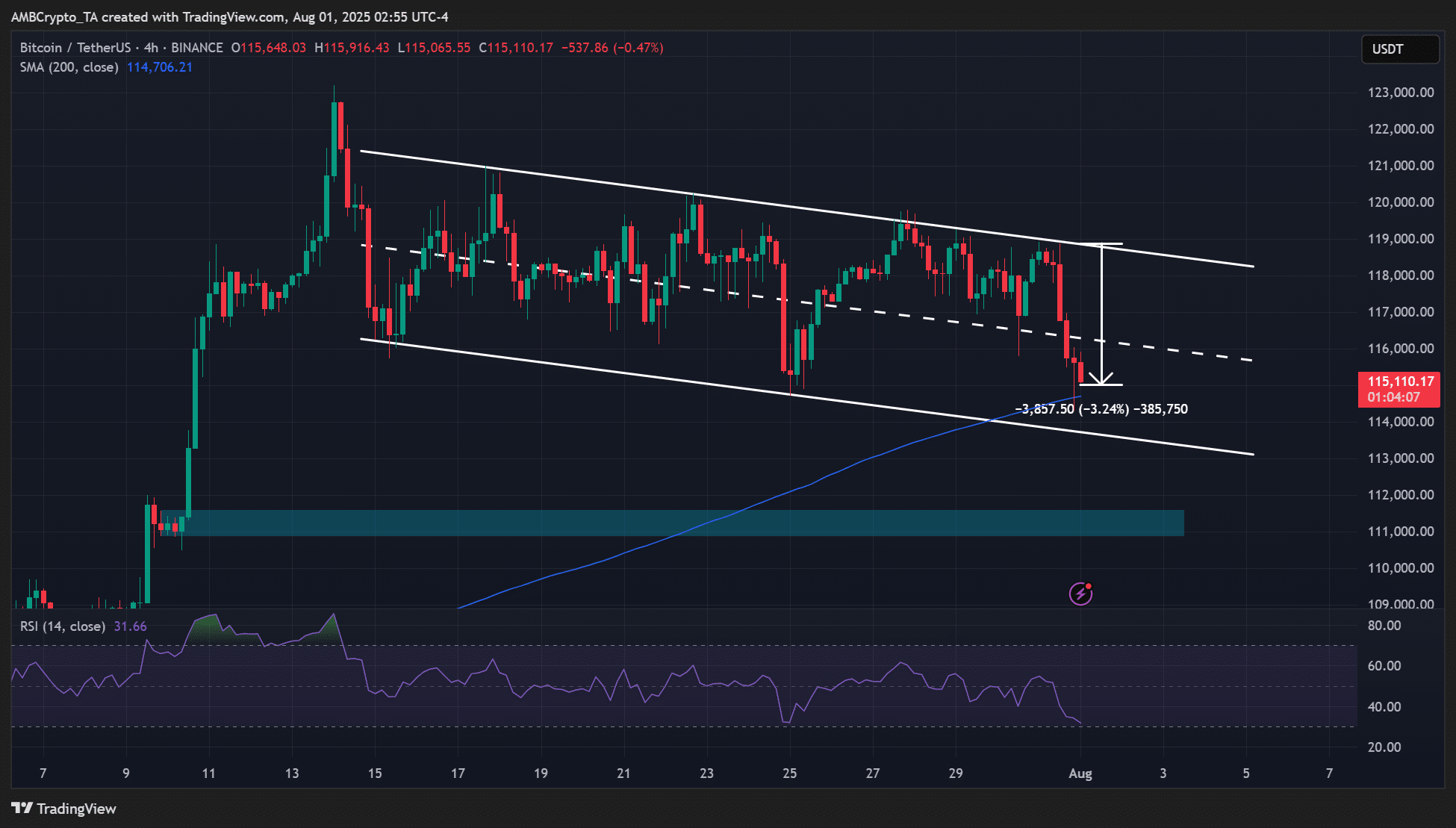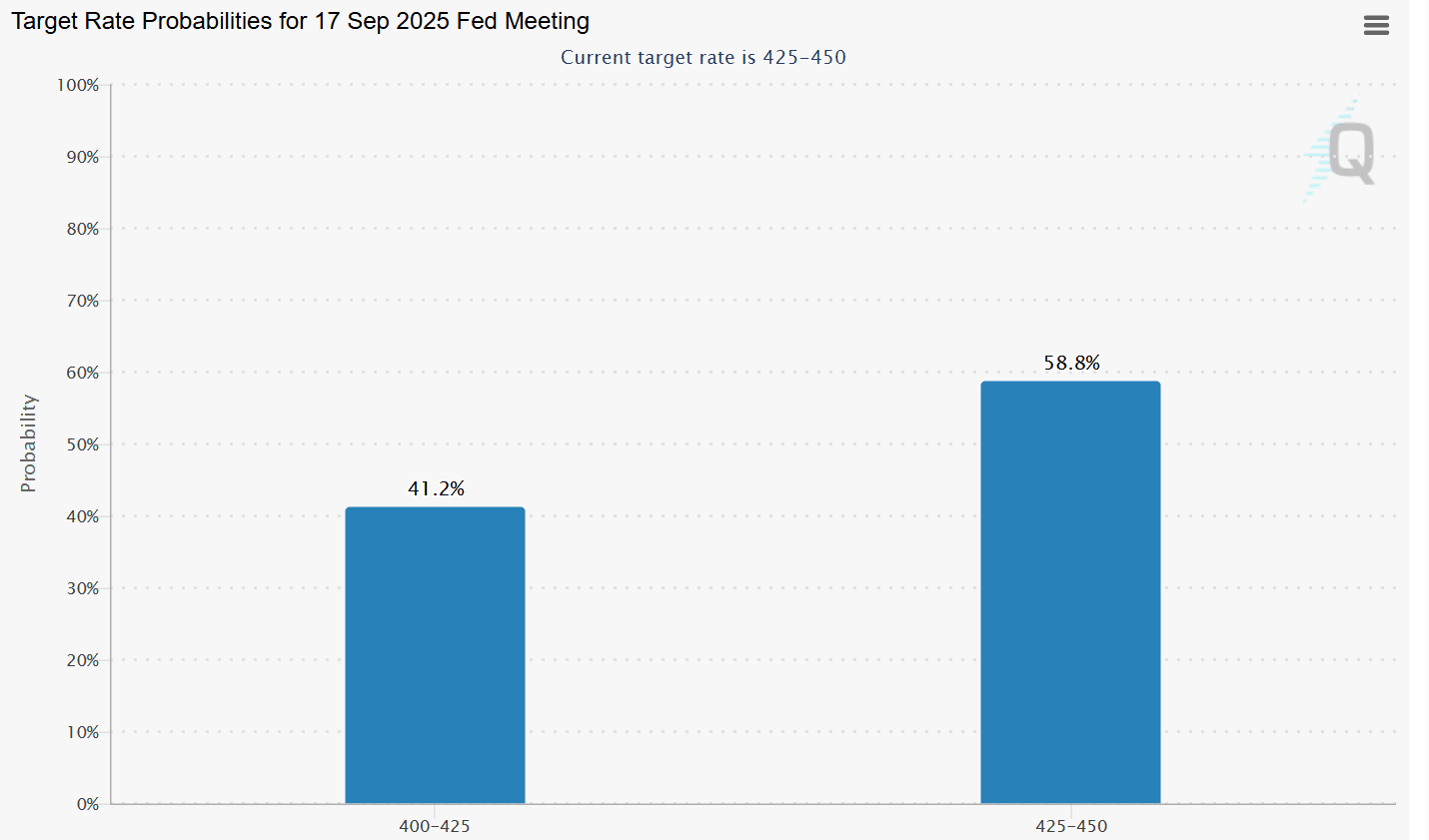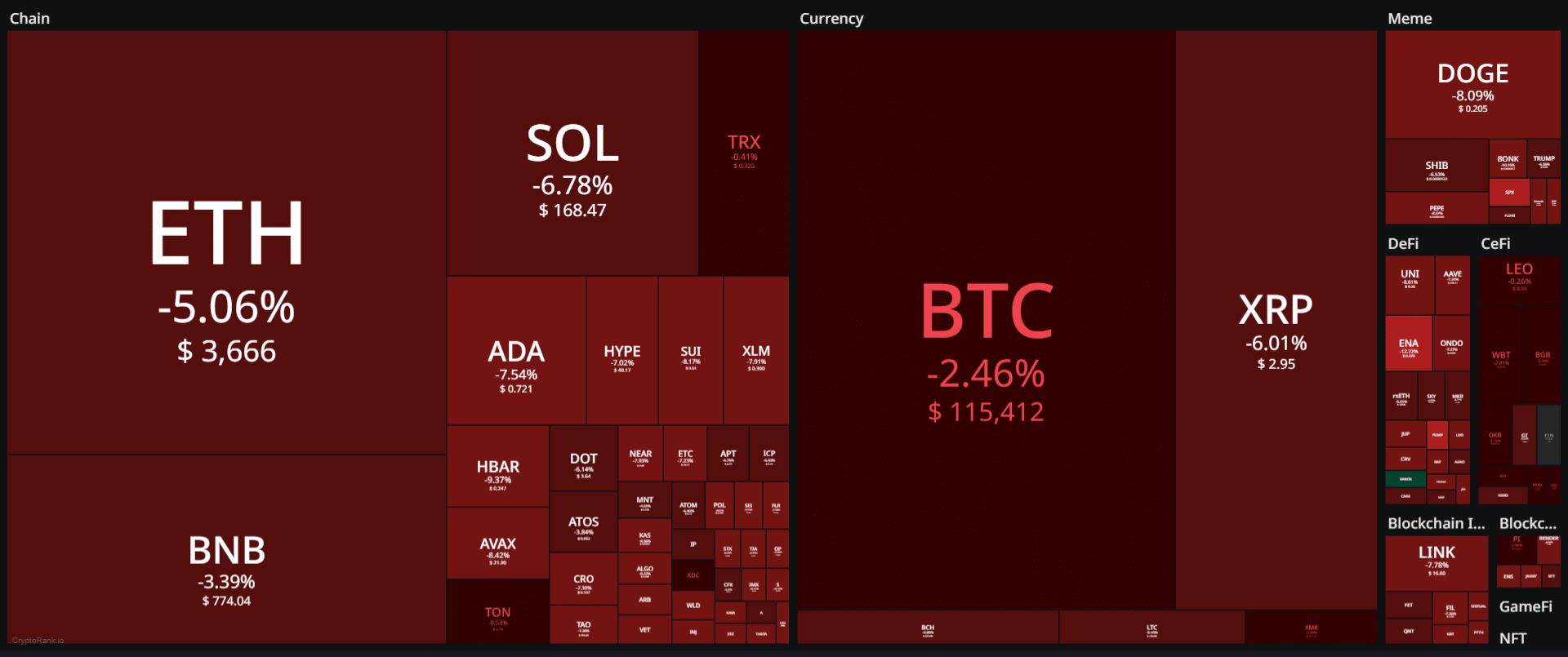Crypto markets declined sharply today as new U.S. tariffs and sticky inflation raised concerns, lowering expectations for a Fed rate cut in September and triggering sell-offs across major cryptocurrencies like Bitcoin, Dogecoin, and Ripple.
-
New tariffs between 10% and 40% on global partners add pressure to markets.
-
Core PCE inflation rose to 2.8% year-over-year, exceeding Fed targets and dampening rate cut hopes.
-
Dogecoin and Cardano led losses with declines around 8%, while Bitcoin slipped below $115K briefly.
Crypto markets fall amid tariff hikes and inflation fears, reducing Fed rate cut odds. Stay informed with COINOTAG’s latest analysis.
How Are New Tariffs Impacting Crypto Markets?
The recent formalization of U.S. tariffs via executive order has intensified macroeconomic headwinds affecting cryptocurrencies. Tariffs on Canada increased from 25% to 35%, with other trading partners facing hikes between 10% and 40%. These changes, effective seven days post-announcement, create uncertainty that weighs on investor sentiment. Crypto markets respond negatively as traders anticipate potential disruptions to global trade and inflationary pressures.
What Does Inflation Data Reveal About Market Sentiment?
The Fed’s preferred inflation gauge, core PCE, excluding volatile food and energy prices, rose 0.3% in June, pushing the year-on-year rate to 2.8%. This exceeds the Fed’s 2.0% target and signals persistent inflation. Experts like Capital Economics’ Harry Chambers highlight that tariff-driven inflation remains a significant concern, reducing the likelihood of a September rate cut. Consequently, markets now price in a 58% chance of a rate pause, which typically dampens appetite for risk assets such as cryptocurrencies.

Source: BTC/USDT, TradingView
Why Are Cryptocurrencies Like DOGE and XRP Leading the Sell-Off?
Cryptocurrencies typically benefit from Fed rate cuts, which lower borrowing costs and encourage investment in riskier assets. However, with the probability of a rate cut dropping below 50%, investors are retreating from volatile assets. Dogecoin and Cardano experienced the sharpest declines, both down approximately 8%, while Ripple and Solana fell over 6%. Bitcoin also slipped 3% below $115K before stabilizing. This sell-off reflects market caution amid uncertain monetary policy and tariff-related inflation risks.

Source: CME Fed Watch tool
How Do Fed Rate Expectations Influence Crypto Prices?
Federal Reserve rate decisions directly impact investor behavior in crypto markets. Rate cuts reduce the cost of capital, encouraging investment in higher-risk assets like cryptocurrencies. Conversely, a rate pause or hike increases borrowing costs and reduces liquidity, leading to market sell-offs. Current market data shows a shift toward a 58% chance of a September rate pause, which has contributed to the recent downward pressure on crypto prices.
What Are the Latest Market Performance Metrics?
| Cryptocurrency | 24h Change | Comparison to BTC |
|---|---|---|
| Dogecoin (DOGE) | -8% | Underperformed BTC by 5% |
| Ripple (XRP) | -6% | Underperformed BTC by 3% |
| Bitcoin (BTC) | -3% | Benchmark |

Source: CryptoRank
Frequently Asked Questions
Why is the crypto market down today?
The crypto market is down due to new U.S. tariffs increasing trade costs and persistent inflation above the Fed’s target, which lowers expectations for a rate cut and triggers investor caution.
How does inflation affect cryptocurrency prices?
Higher inflation often leads to tighter monetary policy, increasing borrowing costs and reducing liquidity, which negatively impacts cryptocurrency prices as investors move to safer assets.
Key Takeaways
- Tariff hikes: New U.S. tariffs on global partners create uncertainty and weigh on crypto markets.
- Inflation persistence: Core PCE inflation remains above target, reducing chances of Fed rate cuts.
- Market reaction: Major cryptocurrencies like DOGE and XRP lead declines amid growing macroeconomic risks.
Conclusion
The crypto market downturn today reflects growing macroeconomic pressures from tariff increases and persistent inflation. With the Fed unlikely to cut rates soon, investor sentiment remains cautious, impacting major cryptocurrencies. Monitoring these economic indicators is crucial for anticipating future market movements and investment strategies.




